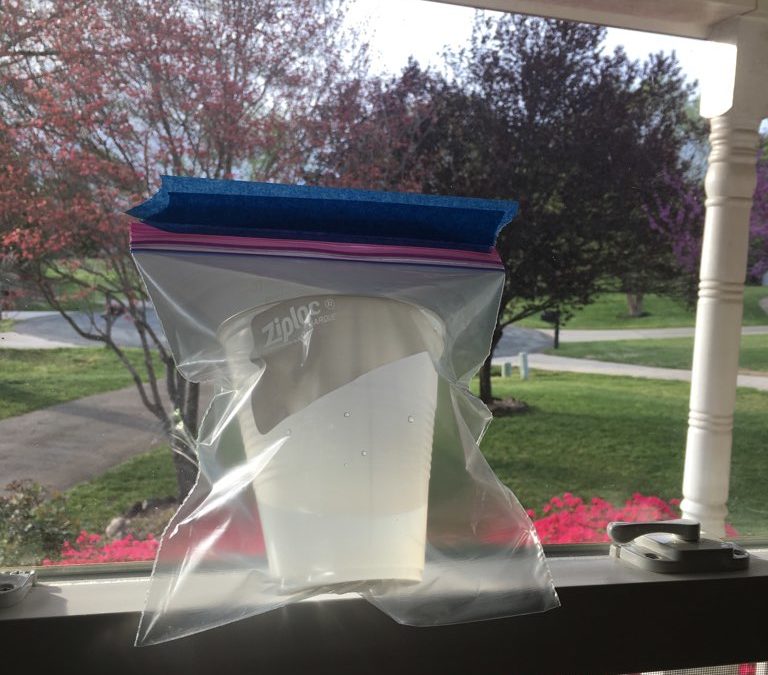The water cycle is the continuous movement of water within Earth and the atmosphere. Water in different phases — solid, liquid, gas — moves through a complex system of evaporation, condensation, and precipitation.
This experiment will demonstrate the water cycle up close.
Materials:
Small paper or plastic cup, zipper-seal plastic bag, tape, water
Steps:
- To start, fill your cup with a small amount of water (about ½ inch or 3-4 tablespoons of water.) Put the cup inside the zipper-seal plastic bag, and seal it.
- Tape the bag to a window that receives sunlight. You could also place the bag outside in a sunny spot. Check on the bag every 30 to 60 minutes and make observations about what you see.
- You’ve just observed the water cycle! Heat from the sun warms the water in the cup, which will gradually evaporate, turning into a gas that you can’t see. Then, as this gas cools, it condenses into water droplets which appear on the inside of the bag. If enough water droplets collect, these will eventually run down the sides of the bag in the same way precipitation like rain and snow fall from clouds. The same thing happens on Earth as the sun causes water from streams, ponds, lakes, and even the ocean to evaporate and turn into water vapor, the gas we can’t see. This water vapor then rises into the atmosphere, where higher in the sky the air is cooler. Depending on weather conditions, sometimes water vapor attaches to tiny particles of dust, salt, or smoke in the air. As these droplets combine with each other (condense), they grow larger, and clouds form. When a cloud holds too much water vapor, precipitation such as rain and snow may fall!


Recent Comments